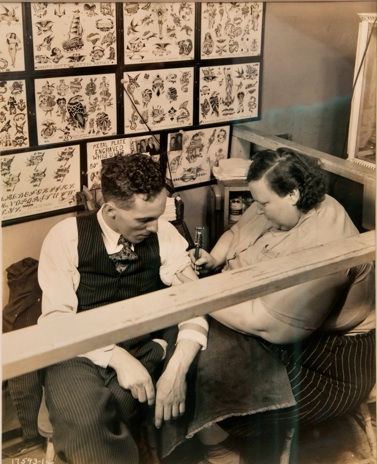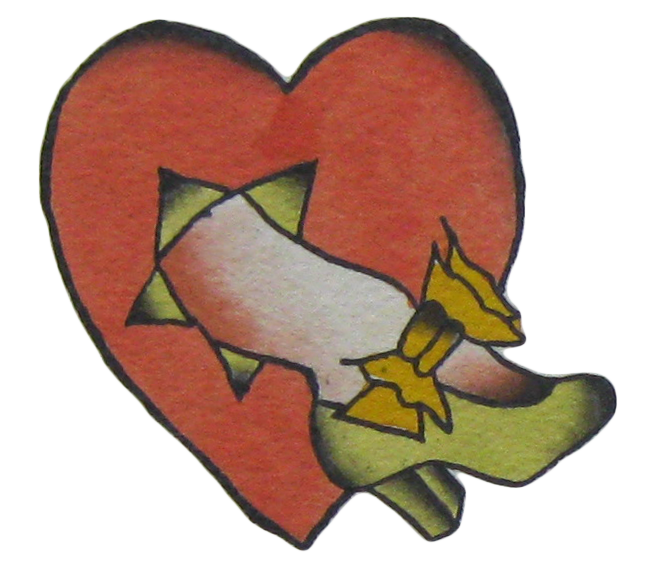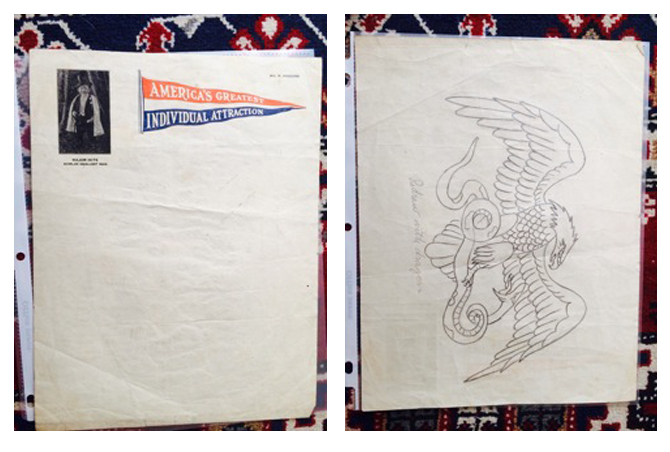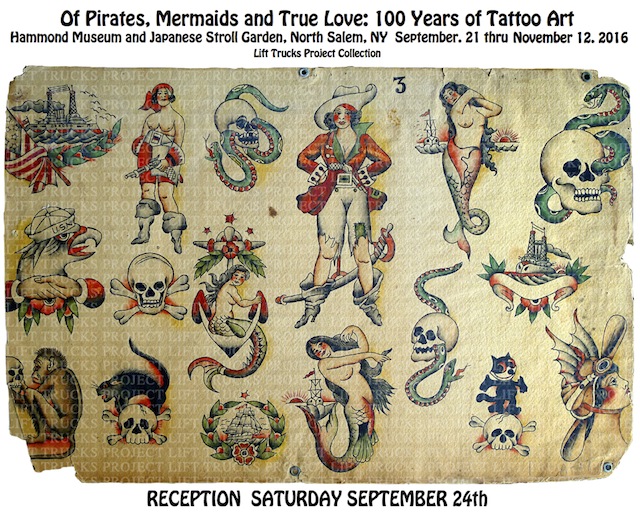
The guy's name is Harry Lawson, right?

Recently looked at a sheet that was unidentified. It's early and nicely drawn. We wanted to try and identify the author, if possible.
There's a date; May 20th 1930 written in pencil and erased under the eagle wings of the crossed equator design. Which caused us to look further. Scotty in the Lift Trucks Lab found another erased set of letters at the bottom of the sheet. Looked like "...rry V Law...n. He then looked at it a different way by flipping colors on the computer to a negative. Almost like a blueprint. You can see it clearly in person, not so much in the photo (apologies.) But you get the idea. All falls into place and says in all caps; HARRY V LAWSON.
Not a bad way to check for signatures on a sheet. Flipping some colors will work better than others. Old computers sometimes have a color matrix rotation system button. On newer models, try Photoshop or iPhoto and swap out one color for another.
One tell was the unique style of feathered shadows under the feet of the women. A black line with fade cast. This is on other Lawson's in a book. Shows up here on the ukulele girl and pirate lass giving stylistic evidence, along with the block letter signature, that sheet is most likely by Harry V. Lawson.
Maybe another reason to dig back into into the slag heap of unidentified tattoo flash sheets.

Click image to see enlarged. block letters: HARRY V LAWSON
Eagles, Two Maidens and a Tiger
This article is by Chuck Eldridge at the Tattoo Archives in Winston-Salem, North Carolina. Reprinted here by his kind permission. Mr. Eldridge is a tattooist, and an acknowledged historian on the subject of tattoo history. If there is anything you want to know about the Tattoo World, Mr. Eldridge is your man.
http://www.tattooarchive.com/
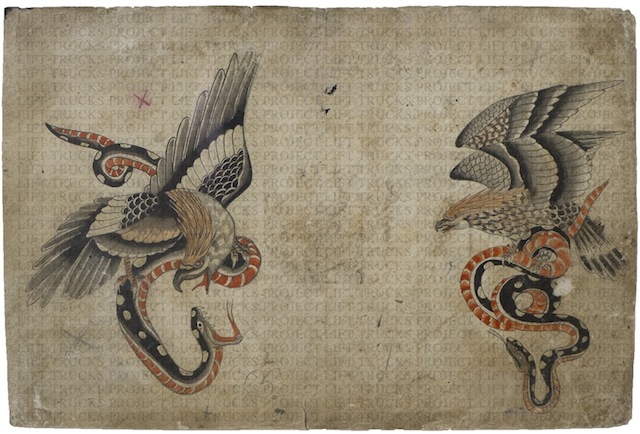 George Burchett George Burchett was probably the most famous tattooist of his era, which spanned from 1890 through 1953. Tattooing in London through two World Wars, Burchett catered to both the rich London society and the poor alike.
George Burchett George Burchett was probably the most famous tattooist of his era, which spanned from 1890 through 1953. Tattooing in London through two World Wars, Burchett catered to both the rich London society and the poor alike.
Born George Burchett Davis in 1872 in Brighton England, George did his first “scratching” (as he described it) on his schoolmates. One of his first customers was his younger brother Charles, who at the age of four or five was wiling to pay the large fee of a stick of liquorices for the pleasure of being scratched by George.
George Burchett joined the Royal Navy at the age of thirteen and found that his ability to “scratch” was welcome. Navy discipline proved too much for the young George, so he jumped ship in Tel Aviv and did not return to Great Britain for twelve years. In order to avoid the authorities George Burchett Davis dropped his last name and became George Burchett. During this part of his life, he worked as a tram conductor and a cobbler, but continued tattooing part time. In 1900 he became a full time tattooist. During the next half century and until his death in 1953, George Burchett created one of the largest tattoo practices in the world.
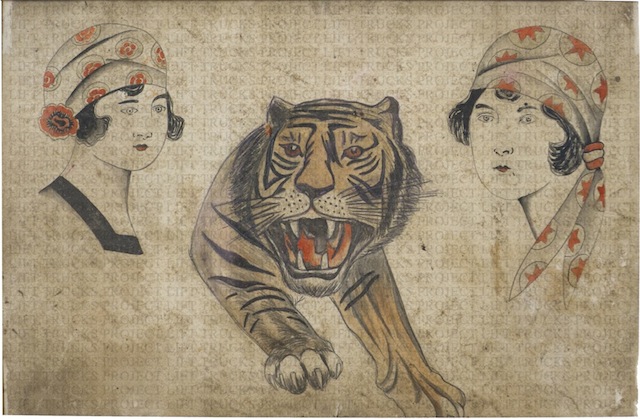 Charles Davis
Charles Davis
Charles Davis followed in his older brother's footsteps into the tattoo world, but never received the acclaim that George did. The brothers worked together and operated shops separately for many years. George and Charles were just a few years apart in their ages. It's difficult to tell them apart in photographs today, with both of them dressed in white shirts, vests and ties, and sporting well-trimmed mustaches and matching shoes! They both even liked to work in white medical smocks. Their tattooing styles were so similar that it is difficult to tell their tattoo designs apart. In later years Charles stepped away from tattooing, and in the 1950s George wrote that Charles was active in the insurance business.
Tattoo Auction
Many of our followers are diehard tattoo aficionados and collectors, and it’s easy to understand why. They know it’s rare to find the good tattoo stuff out in the wild, but we’ve got good news. We’ve gotten reports of an online tattoo auction to be held on the 13th & 14th - 1PM & 6PM each day, Eastern Time. It takes place at Guernsey’s in NYC’s Meat Packing District.

This collection was assembled by a Mr. Peter Mui, an actor, fashion designer, and musician. He traveled the globe collecting and learning about tattoo art, antiques and flash. His collection contains classic Japanese works such as Horiyoshi III to vintage tribal and biker tattoos, present day biomechanical creations and just about every other style you can imagine. Some of the items are a bit newer, for example there are plenty of comic book influenced designs, but diversifying the lot of over 1,000 items are things like a Victorian era English foot pedal operated tattoo machine.

Lucky for Mui’s family, he left them an incredible and massive archive of tattoo art, which they’re selling it at one of Mui’s favorite auctions. A lot of the works in this collection are incredibly unique; from depictions of psychedelic Himalayan gods to 200+ year old Burmese tattoo books. I especially like the Himalayan stuff, reminds us of why we like Rosie Camenga, he was cool and weird.

Even if you’re not buying, you should keep an eye on the auction. For collectors, you wouldn’t want to miss this for the world.
You can learn more and register bid on the Guernsey’s website.
http://www.guernseys.com/v2/tattoo_art.html
Check out the collection.
Day 1: https://www.liveauctioneers.com/catalog/79955_tattoo-art-collection-day1-nov13/
Day 2: https://www.liveauctioneers.com/catalog/79957_tattoo-art-collection-day2-nov14/
Written by Scott Everett, student and project manager at Lift Trucks.

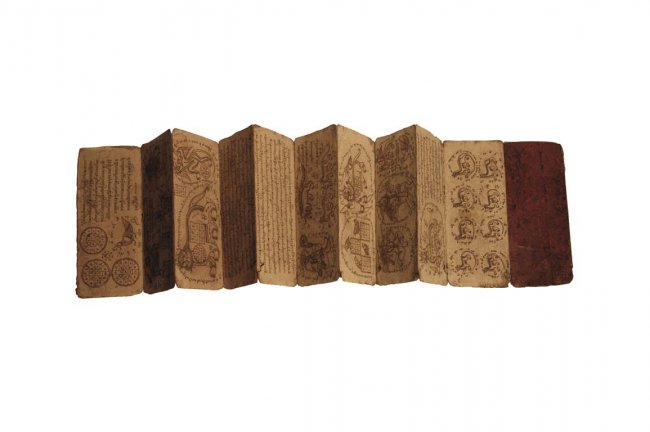
Matisse and Brooklyn Joe
Big colors bouncing around at the Matisse Cut Outs exhibit at MoMA. This exhibit focussed on the paper shapes pinned to the walls of the hotels and studios he lived in France.
But what's this? A mermaid and a parrot? Look at the solid blue shapes on either side of the canvas.

Could it be possible that the Grand Master had seen the tattoo work of Brooklyn Joe Leiber? Preposterous? No, we say, very possible. It's well known that Brooklyn Joe who, although never actually trod the pavement in Brooklyn, may have visited France or even more likely, one of his human canvasses did.
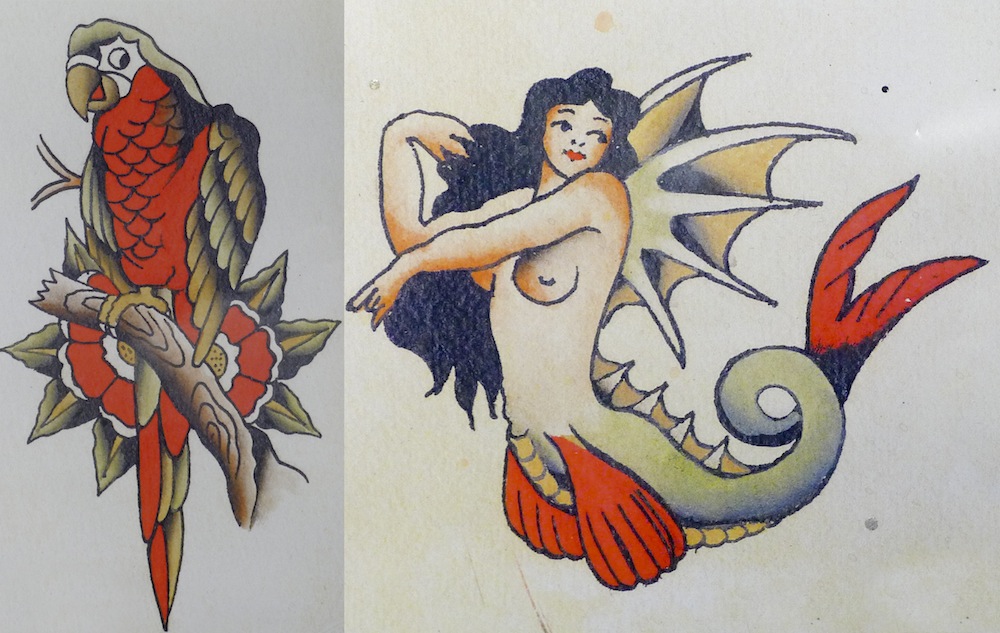
The images and fantasy spread widely with tattooed sailors walking through the ports o'call around the globe. It's a fact that no artist works in a vacuum. Matisse grew up around bolts of wildly patterned fabric in his parents textile business. This translated into his famous abstract pattern style of painting. He most likely saw the stunning tattoo work on sailors while sitting amidst the leafy palms in outdoor cafes where as everyone knows, French artists hang out all day when not banging their many mistresses and girlfriends. More research to follow this exciting discovery.
First Tattoo Pinup Ever?
Samuel F. O’Reilly
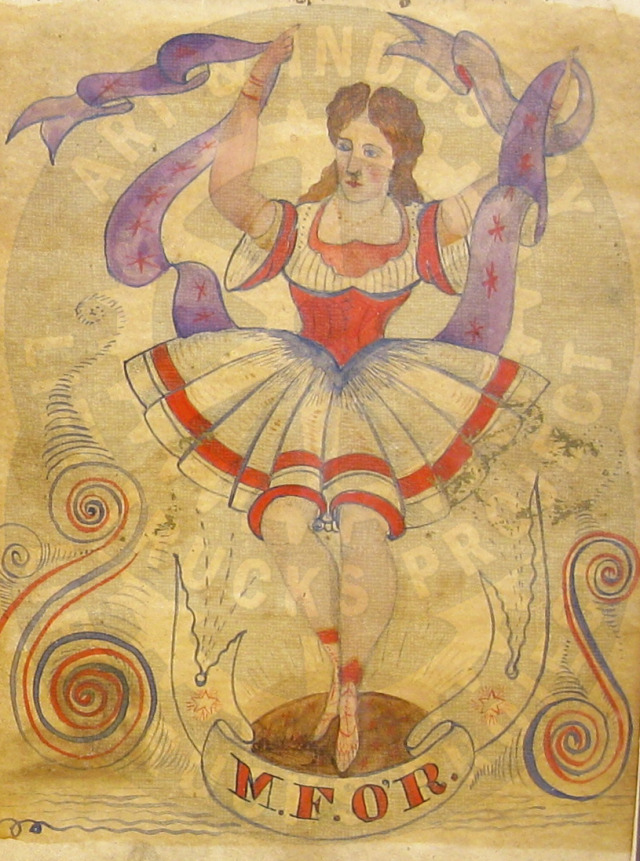
Fake, We Cry!
A reader sent us this e-Bay listing, http://ebay.to/1tf0Kwt, asking our opinion. Just like on the popular tv shows!
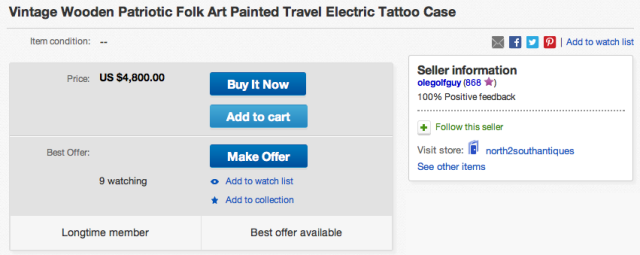
It looks like an itinerant tattoo artist case. These are rare and quite beautiful. Let's look at this one.
The box is indeed quite old. The dry white paint is great, the wood, clasp and hinges are turn of century or older. Unfortunately we don't believe it was ever employed by a tattoo artist.
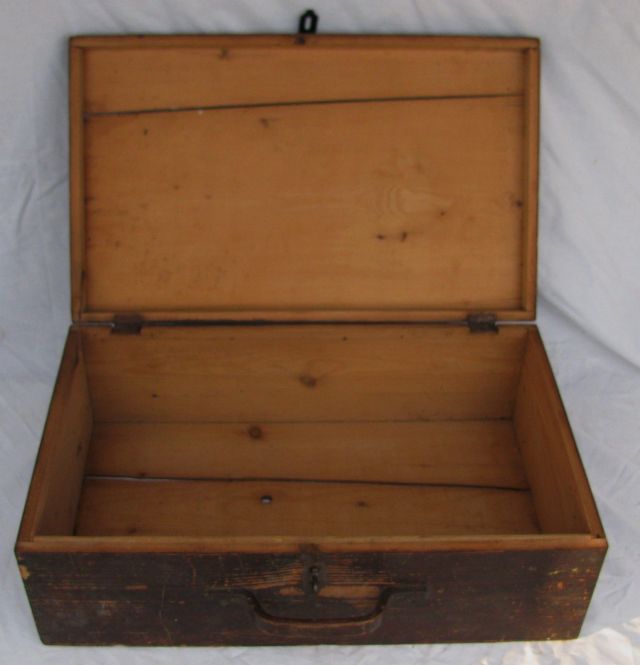
The interior shot gives it away. Where are the partitions to separate drawings from the tattoo machines? There would be partitions to separate the tattoo flash, notebooks and stencils from the business end of tattooing. The inside of the box is just way too clean. Where are all the spilled ink blobs, splatters, drips and circle spots where the bottles would sit, the smudges from black chalk or graphite? We don't see any of the scrapes or nicks from the assorted crap flying around as stuff would when riding the rails, jumping from tramp steamers to port or just traveling from town to town on the carnival circuit. Working the small town county fairs would rattle the insides of a tattoo artists box.
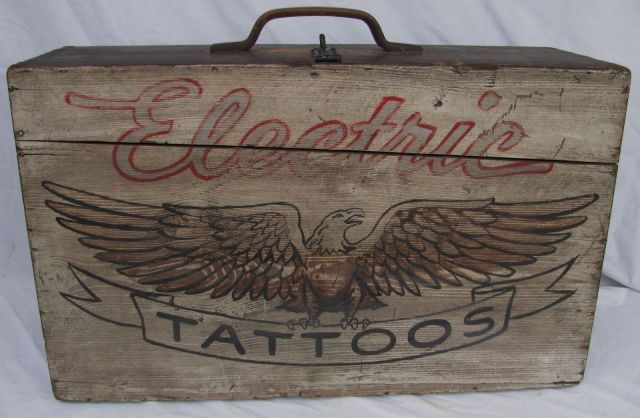
Now, let's look at the lettering. The word "Electric" in script looks like it's borrowed from a 1950's Eletrolux vacuum cleaner. An era at least 50 years newer than the actual box. The eagle is horribly drawn with a fat mutant bird head. It has no relation at all to the way a tattooist would render this traditional symbol. The wear and distress marks on the lettering are clearly bogus. For example why is it worn somewhat in the center of the lettering and not over the eagle? Why are the wing tips not showing any wear from handling?
Where there is money, fakes will follow and the folk art field is boiling over with reproductions. Tattoo art is now in the forgers cross hairs especially with high dollar ($28k) auction records like Coleman's Battleship Kate at Skinner's. Which was clearly the real McCoy.
Looking at other listings from this dealer it turns out he's the same guy who scissored up a full sheet of Oklahoma Bob's tattoo flash into 10 small sheets framed up in a heartless money grab. More items equal more profit goes the thinking here.
In the spirit of equal time and fairness we tried reaching the "olegolfguy" (eBay moniker) for his view. His eBay listings are blocked and do not allow any questions. We'd probably want to lay low also.
Smith Street Brooklyn Comes to Chelsea
If someone asked me, "What's your problem?" I'd have to say "skin."
Andy Warhol

Eighty Eight degrees inside on a sub zero-freezing night outside. Which was good. An abundance of arms necks legs with multicolored designs of dragons skulls clowns snakes pin up girls and geometric patterns floated around the space. Mostly old school classic images updated to the modern look. Even a Felix the Cat tattoo looks new on a young arm or leg. Ghosts of Bert Grimm, Brooklyn Joe Leiber and Sailor Jerry whispered around the crowds. Friendly, sans-Chelsea attitude. Reminded us of Kustom Kulture openings in LA, big smiles and lots of laughs.
The works are screenprints and drawings for tattoos. One stuck out as a Skeleton reading or studying something like an Albrect Durer print, another was a sheet of crybabies. Ok. Maybe some were more successful than others. Overall a cool exhibit and fun place to go, free beer and free tee's by Katsufumi Takihana.
These guys have the reputation for being the best tattooers out there. We wish them good fortune in this transition to fine art.
Smith Street Tattoo Parlour at Art NowNY on 28th street. With Mullowney Printing and Raking Light Projects.
Winning the Fat Lady
